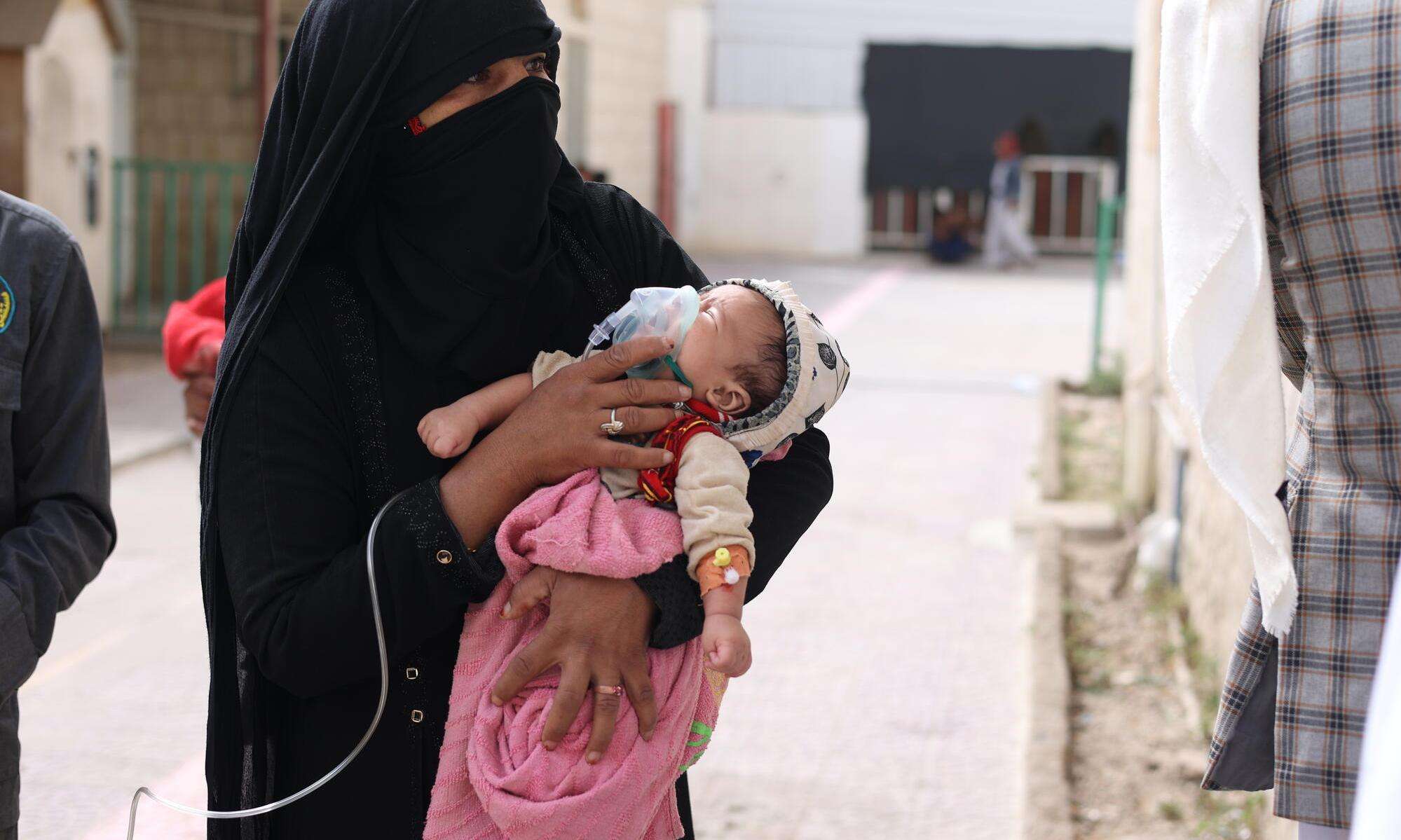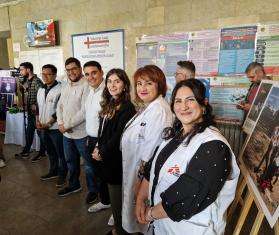Child malnutrition in Yemen is causing preventable deaths, especially of children under the age of five. Doctors Without Borders/Médecins Sans Frontières (MSF) responds to seasonal and annual peaks of malnutrition across the country, in Hajjah, Al-Hudaydah, Saada, and Amran governorates. These rises are usually linked to the "lean season," which is caused by the disruption of agricultural production in rural areas. This pattern was evident before the escalation of war in the country in late 2014, but the direct and indirect consequences of conflict have intensified its effects.
Rates of malnutrition usually peak in Yemen between June and September. But this year, MSF teams in several projects documented an early onset of the peak in April or May and are expecting it to continue until December. This, coupled with high numbers of severely malnourished children needing to be admitted for care, has overwhelmed MSF-supported facilities. In some locations, MSF has launched emergency interventions to respond to the surge of acute malnutrition cases and compounding health complications such as diarrhea, pneumonia, and anemia.
According to MSF teams in Yemen, here are the five main reasons why malnutrition is rising across the country.
1. Rising food prices
Many families in Yemen are unable to afford enough nutritious food as Yemen’s deepening economic crisis has caused prices to soar. Many people lost their jobs or homes during more than eight years of war. The value of the Yemen rial [Yemen’s currency] is depreciating, and prices of food and transportation—including fuel—are rising, further impeding people’s ability to access sufficient food.
“We came to Abs Hospital several times and he was improving,” said Shohra Mohamed, who brought her four-year-old grandson, Abdullah, who was suffering from malnutrition and other complications, to Abs hospital in Hajjah. “The last time he was discharged was 20 days ago. We prefer to come here as the services are free of charge. Abdullah´s father is away. With his mother, we try to feed him with what we have—we rarely can afford to give him milk. We don’t have access to health centers that provide therapeutic food nearby.”
2. Lack of access to primary health care services
Yemen's health care system is in shambles. Many public health facilities have been forced to close, as health authorities contend with a lack of funding and widespread shortages of supplies and equipment. It's common for medical staff to go unpaid for their work. Along with the high cost of fuel, these make it extremely difficult for people to access urgent medical care. This means many can't get care quickly when they fall ill, leading to preventable complications—including malnutrition.
MSF teams working in Al-Salam-Khamer hospital in Amran governorate have seen a steady increase in the number of patients with severe acute malnutrition (SAM) since the end of May. The bed occupancy rate in the inpatient therapeutic feeding center (ITFC) reached 396 percent in September 2022. At the same time, there was a more than 20 percent increase in the number of emergency consultations.
From January to September 2022, 31 patients with SAM died after admission. Most, unfortunately, arrived too late and had medical complications that were too severe to be treated. Many of the people who were admitted to the MSF-supported Al-Salam hospital with SAM traveled from surrounding areas where primary health care facilities were only partially functioning.
A similar trend was observed in Al-Hudaydah governorate. Our team in the emergency department of Ad-Dahi rural hospital received 1,902 children suffering from malnutrition with complications between January and October 2022.
3. Poverty and unstable living conditions
Poor living conditions, especially for displaced people, also contribute to the rise of malnutrition. Abs Hospital in Hajjah governorate receives patients from the surrounding areas of Abs, where many internally displaced people live without proper shelter and with limited access to food or income. From January to September 2022, the MSF-supported ITFC at Abs General Hospital admitted 2,087 children with malnutrition and associated medical complications. Many of these patients came from Al-Khamis, a sub-district in Al-Hudaydah governorate, south of Abs, and several presented late. Most patients were between 6 and 23 months old.
“Most of the displaced people don’t have a regular income due to difficulties in accessing [employment] opportunities,” said Saddam Shayea, MSF health promotion supervisor at Abs Hospital. “Another issue is the lack of access to clean water. This increases the cases of diarrhea, for example, in addition to the lack of hygiene materials that are essential to reduce the risk or limit the spread of some diseases.”
4. Lack of community health education
A lack of health education on pre- and postnatal care is also contributing to rising rates of malnutrition. Without such services complicated pregnancies are more common, resulting in poorer birth outcomes for both mothers and babies. For example, in Abs hospital in 2022, more than 50 percent of mothers in the maternity department were suffering from malnutrition.
In the past, MSF has observed that very few women in the maternity ward had received prenatal care. In 2021, only 10 percent of women who delivered in the hospital had attended at least one prenatal care consultation. Prenatal consultations are usually an opportunity to identify malnutrition in pregnant women and to refer patients for treatment through nutrition services. This improves pregnancy outcomes and reduces the risks of malnutrition in newborns and infants.
In addition, there is limited awareness in the community about the importance of breastfeeding and routine vaccinations for children. Parents also don’t have access to information about identifying the initial symptoms of malnutrition, which delays the detection and prevention of the condition.
5. Gaps in the humanitarian response
This year, funding cuts have forced many primary health care facilities to discontinue services. Those that remain open often have insufficient supplies.
"I have four children who were all suffering from malnutrition,” said Ahmed Abu Al Ghaith, a father who brought his one-year-old daughter who was suffering from SAM to the Ad Dahi hospital. “I took [my children] to the nearest malnutrition treatment center in the area. But they had to choose and prioritize among them to give them therapeutic food, as there was not enough.”
In addition, gaps in nutrition and food assistance programs and inadequate water, sanitation, and hygiene services have increased the risks of malnutrition and related complications, including more sever cases of waterborne diseases.
Malnutrition continues to be extremely worrisome in Yemen, causing preventable deaths. Health authorities and humanitarian and health actors must mount a comprehensive response to reinforce nutritional surveillance countrywide. Gaps in access to primary health care must be addressed to ensure prompt treatment and help build community health awareness to detect the early signs of malnutrition. The response must also include a scale-up of vaccination campaigns across the country, especially among children under five years old, who remain the most vulnerable.




